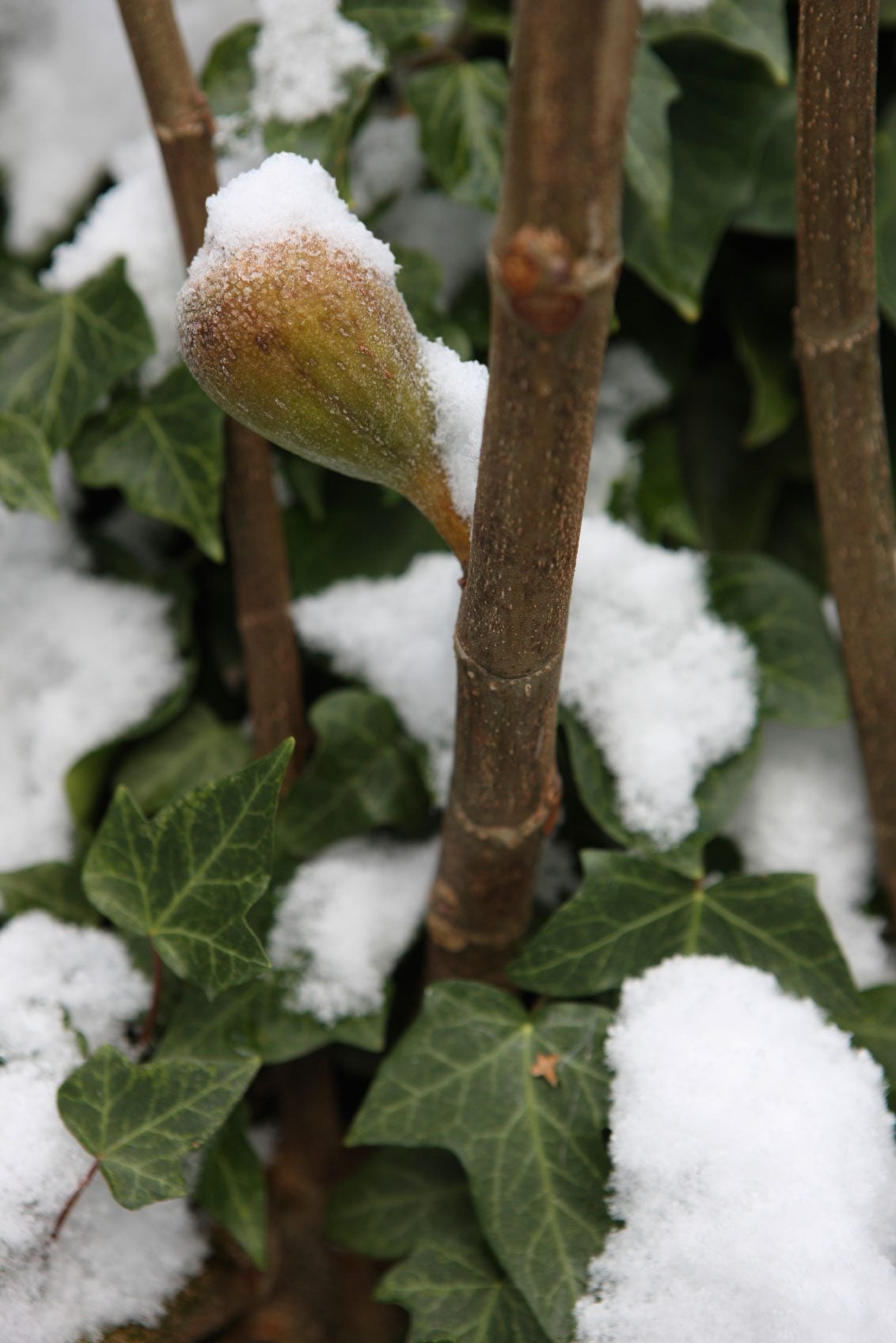Fig Tree Care In Winter - Fig Tree Winter Protection And Storage


Fig trees are a popular Mediterranean fruit that can be grown in the home garden. While it is commonly found in warmer climates, there are some methods for fig cold protection that can allow gardeners in cooler climates to keep their figs over the winter. Fig tree care in winter takes a little work, but the reward for winterizing a fig tree is delicious, home-grown figs year after year. Fig trees need winter protection in areas where the temperatures will drop below 25 degrees F. (-3 C.). There are two types of fig wintering that can be done. The first is fig tree winter protection for fig trees in the ground. The other is fig tree winter storage for trees in containers. We'll look at both.
Ground Planted Fig Tree Winter Protection
If you live in a colder climate and you'd like to try to grow figs in the ground, winterizing a fig tree properly is especially important to your success. First, before you plant, try to locate a cold hardy fig tree. Some examples are:
Planting a cold hardy fig will greatly increase your chances of successfully wintering a fig tree. You can implement your fig tree winter protection after the fig tree has lost all of its leaves in the fall. Start your fig tree winter care by pruning your tree. Prune away any branches that are weak, diseased or crossing other branches. Next, tie the branches together to create a column. If you need to, you can place a pole into the ground next to the fig tree and tie the branches to that. Also, place a thick layer of mulch on the ground over the roots. Then, wrap the fig tree in several layers of burlap. Keep in mind that with all layers (this and the others below), you will want to leave the top open to allow moisture and heat to escape. The next step in fig tree winter protection is to build a cage around the tree. Many people use chicken wire, but any material that will allow you to build a somewhat sturdy cage is fine. Fill this cage with straw or leaves. After this, wrap the whole winterized fig tree in plastic insulation or bubble wrap. The final step in winterizing a fig tree is to place a plastic bucket on top of the wrapped column. Remove the fig tree winter protection in the early spring when temperatures at night consistently stay above 20 degrees F. (-6 degrees C.).
Container Fig Tree Winter Storage
A much easier and less labor intensive method of fig tree care in winter is to keep the fig tree in a container and put it into dormancy in the winter. Winterizing a fig tree in a container starts with allowing the tree to lose its leaves. It will do this in the fall at the same time as other trees lose their leaves. While it is possible to bring your fig indoors to keep it alive all winter, it is not advisable to do so. The tree will want to go into dormancy and will look unhealthy all winter long. Once all of the leaves have fallen off the fig tree, place the tree in a cool, dry place. Often, people will place the tree in an attached garage, a basement or even closets indoors. Water your dormant fig tree once a month. Figs need very little water while dormant and overwatering during dormancy can actually kill the tree. In the early spring, you will see leaves begin to develop again. When the nighttime temperature stays consistently above 35 degrees F. (1 C.), you can place the fig tree back outside. Because the fig's leaves will start to grow indoors, placing it outdoors before freezing weather has passed will result in the new leaves getting burned by the frost.
Gardening tips, videos, info and more delivered right to your inbox!
Sign up for the Gardening Know How newsletter today and receive a free copy of our e-book "How to Grow Delicious Tomatoes".

Heather Rhoades founded Gardening Know How in 2007. She holds degrees from Cleveland State University and Northern Kentucky University. She is an avid gardener with a passion for community, and is a recipient of the Master Gardeners of Ohio Lifetime Achievement Award.
-
 Try The Trend – Turn Any Bed Into A Keyhole Garden With This Clever In-Ground Composter
Try The Trend – Turn Any Bed Into A Keyhole Garden With This Clever In-Ground ComposterKeyhole gardening is an efficient and sustainable practice that saves space. Get started on this DIY project quickly and easily with an in-ground composter.
By Bonnie L. Grant
-
 4 Superfast Composting Methods: Turn Waste Into Garden Gold In 30 Days Or Less
4 Superfast Composting Methods: Turn Waste Into Garden Gold In 30 Days Or LessTry the fastest composting methods to turbocharge your pile and transform kitchen scraps and garden waste into finished compost in just a few weeks.
By Mary Ellen Ellis